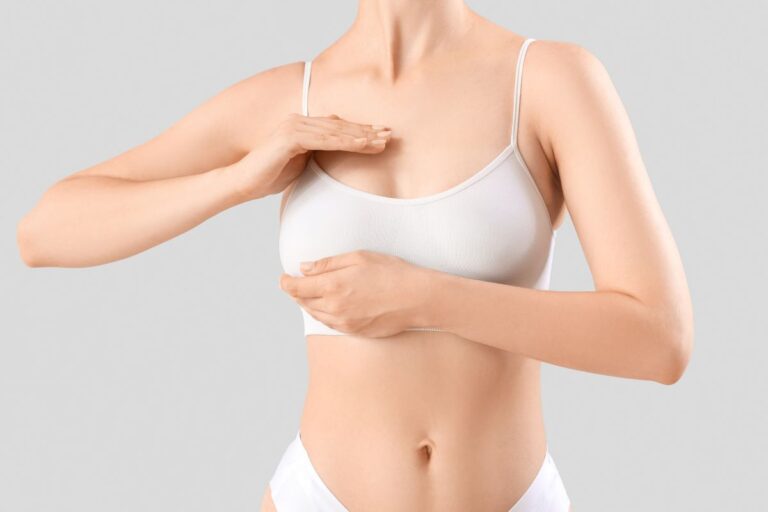
Many women feel hopeful when they begin estradiol therapy—finally getting relief from hot flashes, brain fog, insomnia, and emotional rollercoasters. But a common and unexpected symptom can appear within the first few weeks: breast tenderness.
While it can be uncomfortable or even concerning, breast soreness during hormone therapy is usually temporary and manageable. Let’s explore what causes it, when it may signal something more serious, and how to get relief.
Why Does Breast Tenderness Happen with Estradiol?
Estradiol is a potent form of estrogen, and when introduced or reintroduced to the body after levels have dropped (as in menopause), it can stimulate breast tissue in several ways:
- Promotes ductal growth
- Increases fluid retention in breast tissue
- Heightens nerve sensitivity
This effect is similar to what women often experience during PMS or pregnancy—times when estrogen levels also rise.
References:
- Stuenkel, C.A. et al. (2015). Treatment of Symptoms of the Menopause: An Endocrine Society Clinical Practice Guideline. J Clin Endocrinol Metab. DOI: 10.1210/jc.2015-2236
What’s Normal—and When Should You Be Concerned?
Breast tenderness is considered normal if:
- It starts within the first few weeks or months of estradiol therapy
- It’s bilateral (affecting both breasts)
- It’s mild to moderate and improves over time
However, it’s time to follow up with your provider if:
- You feel a new lump, especially if it’s hard or fixed
- Only one breast is affected
- You experience spontaneous or bloody nipple discharge
- There are skin changes like dimpling or nipple inversion
- Pain is severe, persistent, or worsening
These signs warrant a clinical breast exam and possibly imaging (ultrasound or mammogram).
References:
- Stuenkel, C.A. et al. (2015). Endocrine Society Clinical Practice Guideline
- Gompel, A. et al. (2018). Micronized progesterone and breast cancer risk. Climacteric. DOI: 10.1080/13697137.2017.1421925
What Can You Do About It?
If breast tenderness is bothering you, here are several effective strategies:
1. Give It Time
This is often a temporary side effect that resolves as your body adjusts to the new hormone levels.
2. Adjust the Dose
Your provider may recommend a lower dose of estradiol or a slower titration if symptoms are intense.
3. Switch the Delivery Method
Many women find that transdermal estradiol (patch, gel, or spray) causes less breast stimulation than oral estrogen.
4. Add or Adjust Progesterone
- Some women benefit from tweaking their progesterone type, timing, or dose.
- In some cases, topical progesterone applied directly to the breasts offers relief (though this is still under investigation—see our previous blog).
5. Try Lifestyle Measures
- Wear a well-fitting, supportive bra
- Reduce caffeine and salt, which can worsen fluid retention
- Try natural supports like vitamin E or evening primrose oil (check with your provider before starting any supplement)
- Use a warm compress or cold pack as needed
References:
- ZRT Laboratory. Topical Progesterone and Estradiol Therapy. zrtlab.com
Case Study: Adjusting Hormone Therapy for Breast Tenderness
Name and details have been modified to protect patient privacy.
Karen, a 59-year-old woman from Oregon, began oral estradiol therapy (1 mg) to address severe hot flashes and insomnia. Within three weeks, her vasomotor symptoms were significantly improved—but she developed persistent bilateral breast tenderness.
After discussing this with her provider at Antigravity Wellness, they decided to switch her to a lower-dose transdermal patch. The tenderness began to fade within a few weeks, and she continued to enjoy the benefits of hormone therapy without further discomfort. Regular follow-ups ensured her dose was effective, and she’s now thriving with ongoing support and monitoring.
We Can Help: Personalized BHRT Support at Antigravity Wellness
At Antigravity Wellness, we support women across Washington and Oregon State with safe, evidence-based bioidentical hormone therapy. Whether you’re just getting started or fine-tuning your current plan, our services include:
- In-depth hormone and symptom assessment
- Personalized BHRT using oral, topical, or transdermal options
- Monitoring for side effects like breast tenderness
- Access to trusted providers who truly listen
We understand how hormones impact your daily life—and we’re here to guide you through the process safely.
Book your brief initial consult today
Medical Disclaimer:
This blog is for informational and educational purposes only and is not intended as a substitute for medical advice, diagnosis, or treatment. Always consult with a qualified healthcare provider before making any changes to your medications, supplements, or treatment plan.




